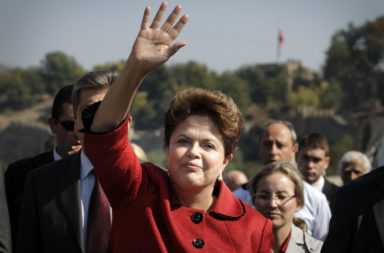Brazil’s new administration faces daunting challenges. Interim President Michel Temer has assumed power with conditional support in Congress and little popular support. His term is uncertain – the senate may exonerate Dilma Rousseff, impeached over corruption allegations, and reinstate her as president. Rather than the proverbial first 100 days, this may be all the time Temer has.
An ambitious economic reform programme might be regarded as impossible under such conditions. But the opposite is true. Only by launching a vigorous reform initiative can the government afford to adopt a looser short-term macroeconomic stance, generate positive economic expectations and stabilise the economy.
Brazil is experiencing the worst recession in its modern history – a nearly 10% cumulative fall in GDP has surpassed even the downturn of the early 1980s, when the international debt crisis inaugurated Latin America’s ‘lost decade’. At the same time, macroeconomic imbalances have widened.
On the positive side, the newly appointed economic team displays talent and professionalism. Henrique Meirelles, the finance minister, is a former central bank president who distinguished himself by consolidating the inflation-targeting regime and helping establish confidence under the previous administration of Luiz Inácio Lula da Silva. The new central bank chief, Ilan Goldfajn, has an outstanding career in the private sector, government, and academia.
The new economic administration has already set more realistic budget projections, and started discussion of fiscal and pension reforms.
All this is necessary because Brazil has run out of fiscal room for manoeuvre. Public debt has climbed to around 70% of GDP. Ratings agencies continue to downgrade Brazil’s sovereign credit rating. The government mostly borrows domestically and in local currency securities. But because of persistent inflation real interest rates at home will remain high. In 2015, the cost of debt service surpassed 8% of GDP.
There is similarly little space for expansionary monetary policy. As the central bank’s credibility has eroded, inflation expectations have become more entrenched. So monetary expansion would result in price increases rather than stimulate growth.
The new administration faces a dilemma. A macroeconomic adjustment is necessary. But with double-digit unemployment and increasing credit delinquency, Temer and his team cannot risk exacerbating the recession.
Cutting inflation will require a more independent central bank. It is time to start laying the groundwork for reform of credit policies, particularly highly subsidised credit to ‘national champions’.
Policies should focus on deeper reforms that ensure long-term fiscal sustainability and central bank credibility. Tangible progress here will lower the necessity to achieve a high short-term primary surplus or to tighten monetary policy.
For stabilisation to succeed, Brazil requires a recovery in investment and productivity growth. According to the International Monetary Fund, Brazil’s fixed capital accumulation will decline by 20% over the next three years. Productivity growth has contributed just 0.5% to GDP growth over the past decade.
Productivity stagnation relates to two areas – Brazil’s protectionism, and the country’s negative business climate. Excessive protectionism has isolated Brazil from world trade, and trade is even lethargic within the Mercosur regional trading bloc. Brazil’s industrial business association has started to push for greater openness, given that isolation from global production chains restricts opportunities for the industrial sector.
These are formidable tasks. But there is hope of a viable economic policy, even if the fluid state of Brazilian politics could produce more turbulence. Brazil’s 2000s model no longer works, debilitated by declining export prices, weaker capital inflows, a corruption scandal surrounding state-owned energy company Petrobras, and the exhaustion of credit-driven expansion.
Brazilian economic dynamism will re-emerge only under a new model and with new management. Temer is just the beginning.




